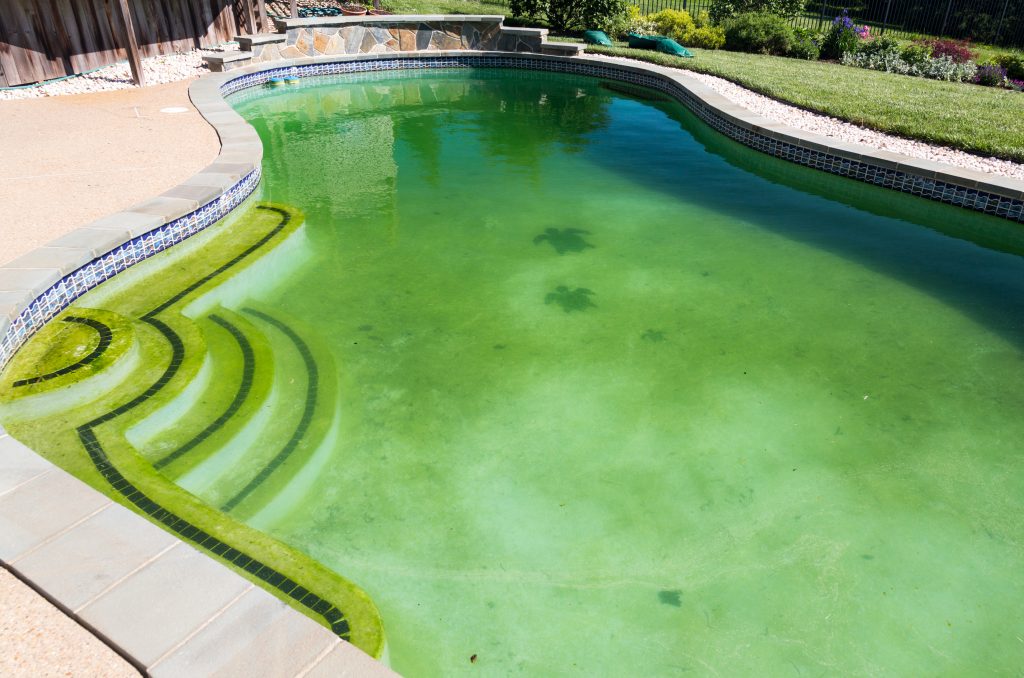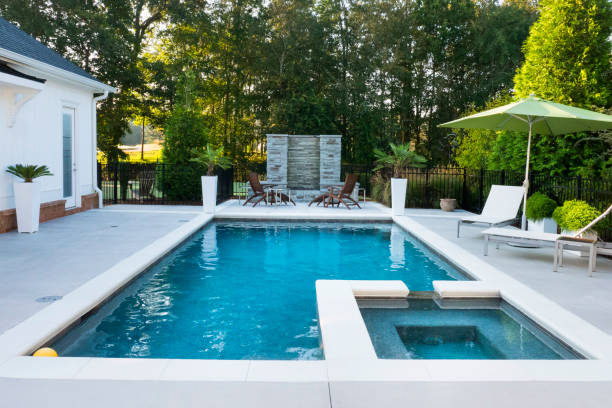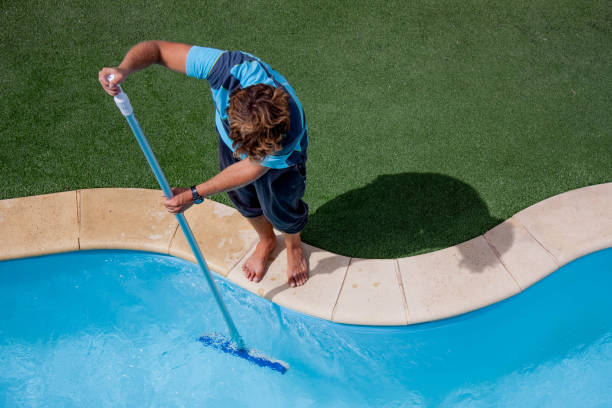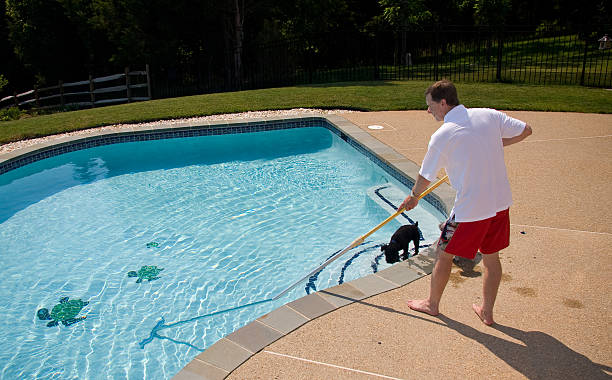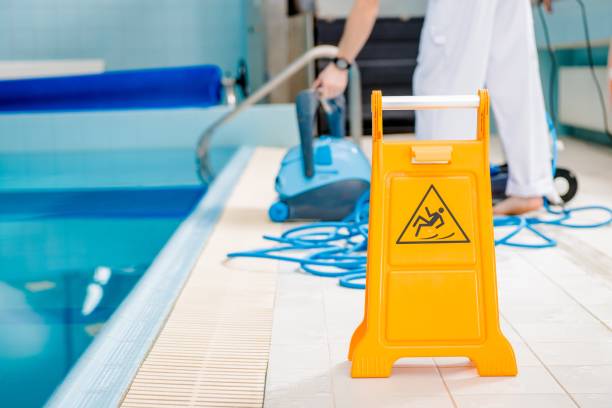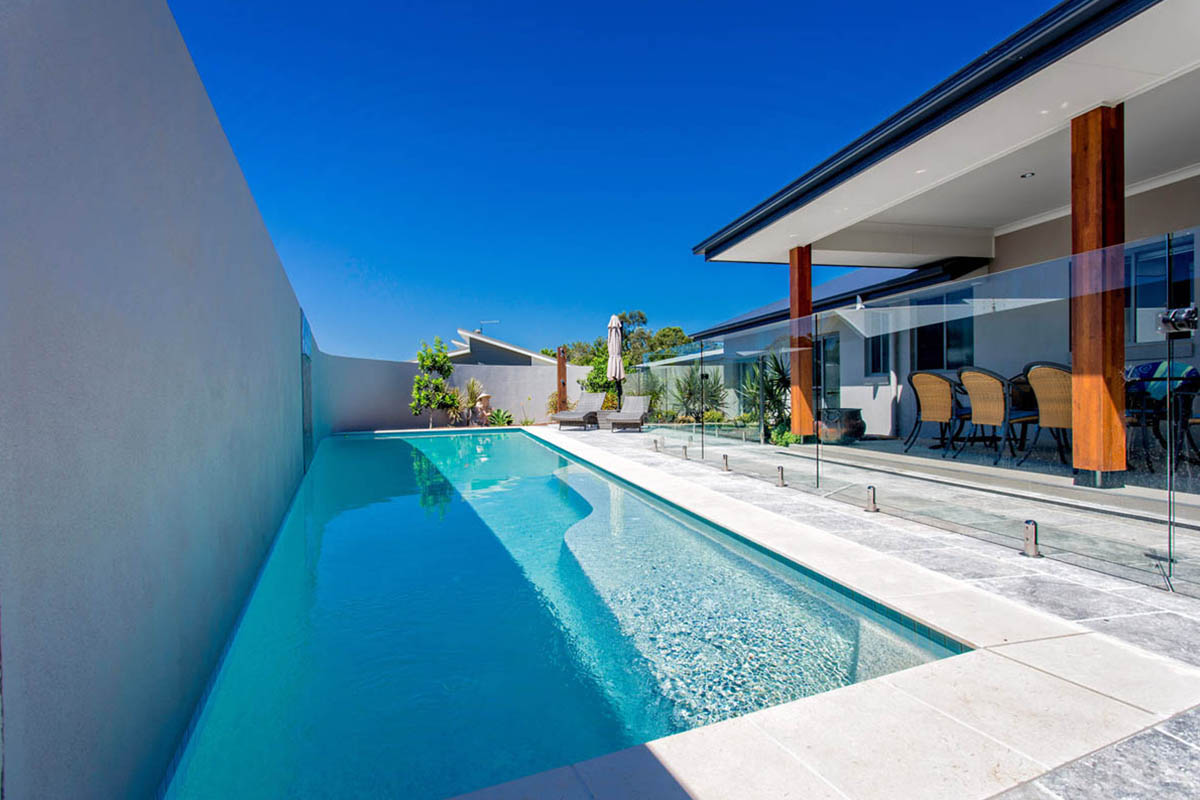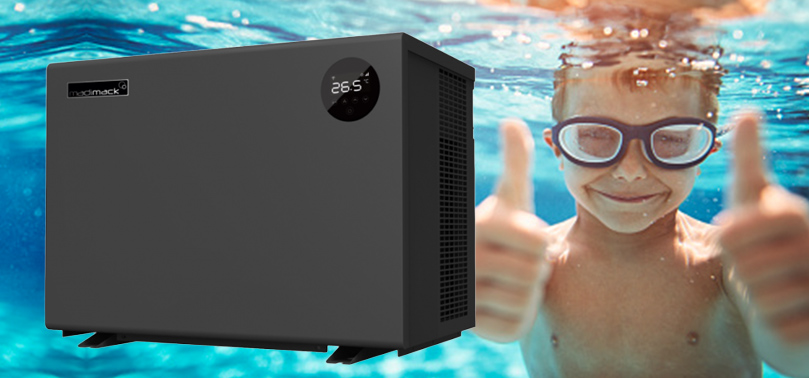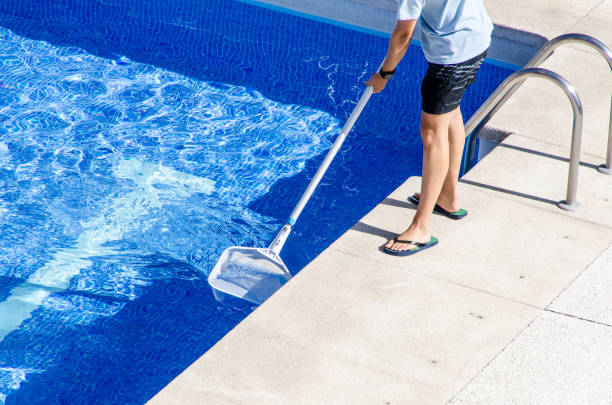An estimated 2.7 million Aussies own a pool. But how many take proper care of it? If you start to notice the water looking a little less blue, keep reading. There's a lot you can do to fix and prevent a green pool.
Our guide below will provide you with all you need to know on how to clean a green swimming pool.
What Causes a Green Pool?
A green pool is unpleasant and uninviting. Not only that, but it's a breeding ground for bacteria and algae. Since these aren't mates you want to invite to your next pool party, take a look at the most common causes of a green pool.
Low Chlorine Levels
Chlorine kills harmful bacteria in pool water. When levels are low, bacteria, along with algae, starts to grow. If algae levels increase too much, you'll start to notice it on the sides of your pool.
As the algae covers more of your pool lining, it gives your pool a green tint. This can happen quickly. So as soon as you notice the algae, take steps to get rid of it.
Copper or Other Metals
If your pool water is high in metals like copper or iron, it will become more acidic. This can change the colour of your water.
A colour change can happen when you introduce further chemicals into the water. If you've recently shocked your pool (more on that below) and the water turned green, you may have a metal issue.
Another sign of high metals is if friends with blonde hair find it turning a bit green after swimming. Be sure to get the problem resolved quickly, as high metals can stain your pool lining over time.
Clogged Filter
A clogged filter can keep your pool from removing excess algae or plant matter. If these build up, fungi and other bacteria can grow faster. As you saw with low levels of chlorine, these build-ups can tint your pool green, too.
You should be cleaning your filter cartridge every six months or so. Even still, algae blooms can happen fast. Check your cartridge at least once a month to catch clogs before they're a problem.
pH Imbalance
Finally, an imbalance in your pool's pH levels can cause the water to change colour. A pH balance of around 7.2 to 7.8 is ideal. If your pH level is too high, it will impede your chlorine from killing bacteria.
If your pH level is too low, you'll notice your eyes burn more often when you're in the water. Getting regular pool cleanings will keep your pool in balance.
How to clean a green swimming pool
Now that you have an idea of what's causing that green colour, you can rid your pool of it. It may take some trial and error. But if in doubt, contact a pool cleaning service near you.
Otherwise, you can use the tips below to find your best solution.
Test the pH
Pool maintenance companies often offer water testing kits. These will show you the pH balance of your pool water. You can also bring in a sample for them to test at the store.
Keep your pool pH level balanced by using a chemical kit. These are available online or at your local store. Make sure you get the right kit; if your pH is low, be sure you're buying a kit that will increase it.
Shock the Pool
When you're cleaning a green pool, you may have to shock it to kill the remaining algae. You should be adding chemicals to your pool regularly. But if you have an out-of-control algae problem, shocking is your best option.
'Shocking' refers to adding a high concentration of chemicals to your pool. You add chlorine, for instance, to the point where it can successfully kill off bacteria and algae.
In the summer when you're using your pool every day, you should be shocking your pool every 1-2 weeks. You can hire a pool service to make sure you're getting the right balance of chemicals.
Replace the Pump and Filter
You may have determined that the reason your pool is green is due to a clogged pool filter. Great news! Unclogging a filter is a standard service that most pool cleaners provide.
Or you can give it a go yourself. Filter cartridges have a lot of pleats, so you'll need a filter cleaning solution and a filter brush. After removing larger pieces of debris, soak your filter, then scrub the pleats.
If you've tried unclogging it yourself but your pool is still green, check your pump. In the best-case scenario, a pool service can help you unclog your filter and your pump. In the worst-case scenario, you may have to replace them both.
Drain the Pool
Draining your pool is timely and can be expensive. However, if your algae build-up is extreme, it may be your best option.
Test your situation by walking over to the shallow end of your pool. Can you still see the bottom? If your answer is now, look into draining. It will allow you to scrub and bleach the lining, as well as start afresh with new water.
Your pool likely has a main drain. Let the water out from there, making sure to close your skimmer valves before doing so. You may not have to drain the entire pool.
Often, you can leave about 3 inches of water (in the shallow end) and go from there. Be sure you remove as much of the algae as possible and being any chemical treatments.
Then you go about refilling the pool. Be mindful not to add water that has high concentrations of the metals we mentioned above.
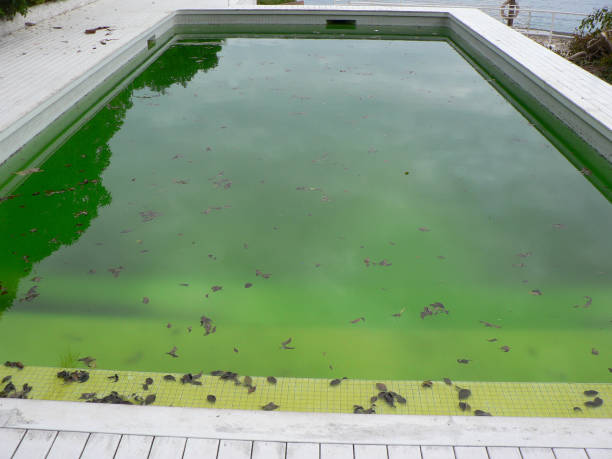
Seek professional help
The easiest way to clean a green pool is to call in a professional. By examining potential equipment failure and water chemistry, Handy Pools can quickly identify the cause of the problem. We’ll take care of the whole process from cleaning to chemicals and we’ll have your pool sparkling clean and healthy in no time.
Keep Your Pool From Getting Green
Regular service will keep you from having a green pool, but the keyword is 'regular'. If you go on vacation for a week or two, keep your pool filter on while you're gone. Even if you haven't used your pool in months, get it cleaned once a week by a professional service.
A little bit of effort here and there will prevent larger problems and costs down the line. Just think of each cleaning as an investment in your pool's long-term health. If you'd like to enquire about how to clean a green swimming pool, get in touch here.
